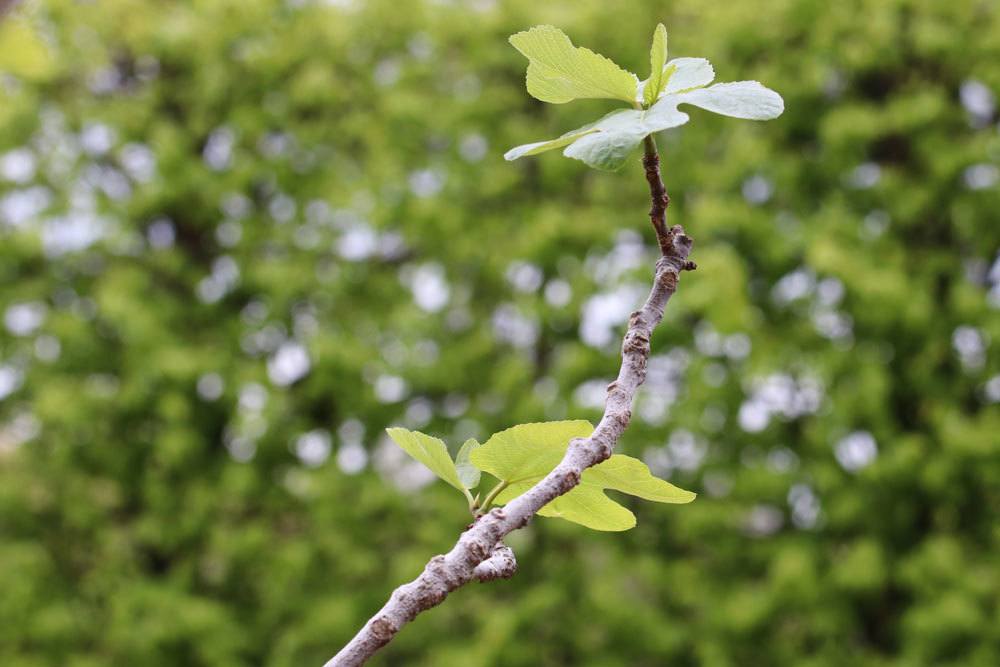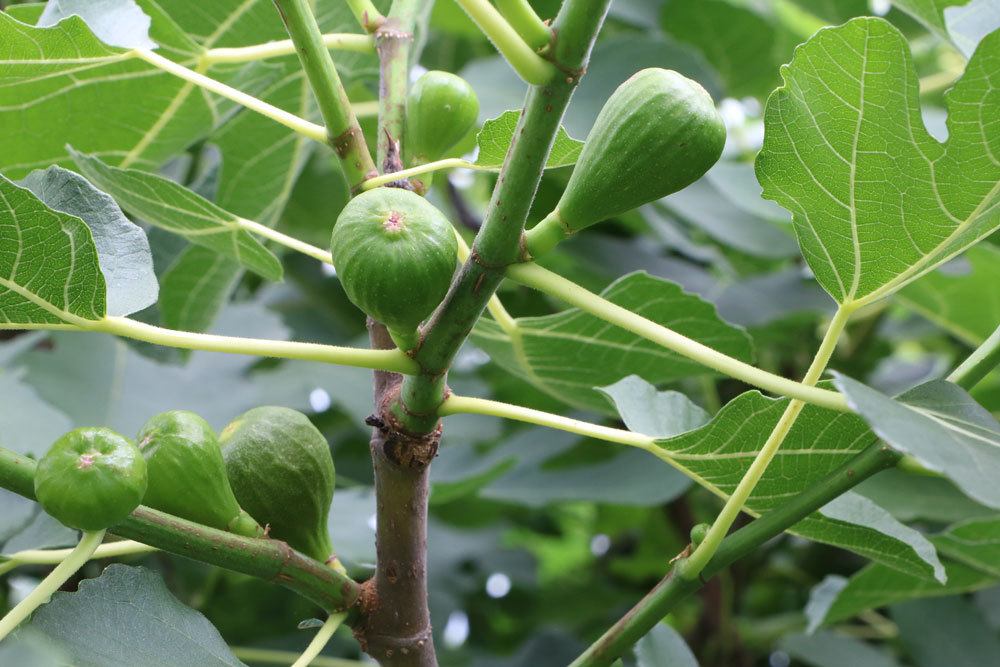Whether the fig tree should be wintered in the apartment, in a basement or garage, or outdoors, depends on various factors. For example, there are different varieties of fig, which are classified from moderately hardy to frost-hardy at -20 ° Celsius. In addition, there is the climatic region in which the tree is cultivated. And last but not least, especially in the local latitudes, the age of the tree plays a role, because up to the age of ten, any fig tree, whether frost-hardy or not, should be protected in winter.
Contents
- 1 Wintering
- 2 Cultivated in a corner of the house
- 3 Remove the fleece at the beginning of March
- 4 Wintering in a tub on a terrace or balcony
- 5 Leave the fig in a sun-protected place for the time being
- 6 Wintering in the basement or garage
- 7 Wintering in the winter garden
- 8 Avoid direct sunlight at the beginning
- 9 In the winter months in the apartment?
- 10 Author
Wintering
Outdoors
In many regions, Ficus carica can certainly be overwintered outdoors, as many varieties are considered frost-hardy down to -20° Celsius. Especially the mild regions, like in the wine-growing areas along the Moselle and the Upper Rhine as well as in the local coastal areas, the fig tree can definitely survive the cold and frosty months outdoors. However, in the first young years, it must be protected here as well. Thus, the outdoor tree should be protected during the winter months as follows.
- young trees, up to about one meter in height, sheathe with plant fleece
- a layer of mulch is placed on top of the soil
- also brushwood mats on earth protect from frost
- in rainy winter regions protect from waterlogging
- to do this, prepare the soil at the site already at planting time
- water only in dry cold periods
- do not water during frost
- do not fertilize the fig in the winter months outdoors
- older, large fig trees do not need winter protection above the crown
- here it is enough to cover the earth with mulch or brushwood

Before the first budding, when the new leaves and shoots appear on the fig tree in March, the fleece should be removed. If you have a little manual dexterity, you can also build a frame out of wood that fits over the tree and over which the fleece is pulled for the winter. Now in the month of February/March do the basic fertilizing.
Cultivated in a corner of the house
Often fig trees are cultivated in a house corner in the garden bed, so that you are protected from the wind. Here, too, winter protection is recommended in the first few years. Even if the cultivated variety is hardy, the young trees are still sensitive to frost and cold and should therefore be protected during the cold months.
The procedure for this is as follows:
- Cover the soil with mulch or brushwood plates
- wrap the fig tree as a whole with plant fleece
- can also be attached to a house wall on one side
- slowly stop fertilizing in September
- do not fertilize from October
- watering must be continued
- soil should be only slightly moist
- here absolutely pay attention to stagnant moisture
- water only on frost-free days
Remove the fleece at the beginning of March
When the fleece is removed, Ficus carica should first be slowly accustomed to the sun again. Therefore, if the sunlight is too strong at the location, it must still be offered shade in between, especially during midday. Now also start fertilizing again with the basic fertilizer and the fig tree will quickly sprout and form its decorative leaves again.

Wintering in a tub on a terrace or balcony
Wintering in a tub, which will remain on the terrace or balcony, is similar to that in a garden bed in front of a house corner. Since especially the roots in a tub are damaged more quickly, the entire pot should be wrapped with brushwood mats. In addition, in order to prevent frost from entering from the bottom, it should be placed on a piece of wood or a polystyrene plate. So it is warmer from below. Otherwise, when caring for it over the winter months on the terrace or balcony, the following should still be considered.
- Place the pot in a sheltered corner or in front of a house wall.
- it is ideal if the terrace or balcony is roofed over
- so too much water is avoided in the wet months
- add mulch to the soil
- wrap the entire tree with plant fleece
- water only moderately, so that the soil remains slightly moist
- fertilize less and less from September
- then stop fertilizing completely
- start with basic fertilization at the end of February and beginning of March
- now also remove plant fleece
Leave the fig in a sun-protected place for the time being
Before the first frosty nights are expected, which varies from area to area, the measures for successful overwintering should take place. Otherwise, the twigs and branches will still take an early frost damage, which could be quite avoidable.
Wintering in the basement or garage
If you have only a dark basement or a moderately bright garage available for wintering, you can also overwinter the fig tree here. This is because the fig loses its leaves in the fall and therefore does not necessarily need much light during its winter dormancy.
However, a boiler room is rather unsuitable, as it is too warm here, especially in the cold months, when the fig is in the dark. A drying room is also not to be chosen because of the high humidity. Therefore, the ideal location and winter care for Ficus carica in the basement or a garage look as follows.
- dark and cool
- do not fertilize
- water only moderately
- do not let the soil dry out
- in February/March slowly get used to light and warmth again
- carry out basic fertilization
- repot if necessary

Wintering in the winter garden
If you have a conservatory in your home, the fig, which was cultivated in a tub, can also be wintered well here. A bright and unheated winter garden is particularly suitable for this purpose. However, the fig should not be permanently cultivated here, because in summer it needs a full sun location and plenty of air to bear many tasty fruits. When overwintering here in this place should be done as follows.
- Move fig before the first frost with tub
- fertilize only a little from September
- but do not stop completely
- water moderately and avoid waterlogging
- regularly check for spider mites
- these can quickly infest the fig in the winter quarters
- repot in February/March if necessary
- carry out basic fertilization
- relocate to an outdoor place
Avoid direct sunlight at the beginning
Figs that are overwintered in a bright, frost-free place should continue to receive fertilizer. However, this is given only very moderately. All others that are overwintered either outdoors, on a balcony or terrace, in a garden bed in front of a house wall, or even in a dark, cool room should not receive fertilizer over this period.
In the winter months in the apartment?
Putting the fig in a living room during the cold, frosty months is possible, but is not highly recommended. For one thing, it is very warm here even in winter, so the fig tree cannot properly maintain its winter dormancy. This is because the fig does not want frost, but it still needs cold between ideally 0° Celsius and at most 12° Celsius to keep its winter dormancy.
On the other hand, it loses leaves and is therefore no longer very decorative for living spaces. However, if no other location is available for the winter months, the following procedure should be followed for wintering in the apartment.
- choose a bright, not so warm corner
- not directly in the warm living room
- a cool bedroom is more suitable
- avoid direct sunlight through a window
- do not place it in the direct vicinity of a heater
- water regularly
- soil should remain moist
- give less fertilizer, do not stop completely
- carry out basic fertilization in February/March
- so the fig can sprout again
Since Ficus carica is quite warm and bright when overwintered in the apartment anyway, it does not necessarily need to be slowly accustomed to a higher temperature after the winter months. Only the sunlight should be slowly increased, so that the young, newly sprouting leaves do not burn immediately.


